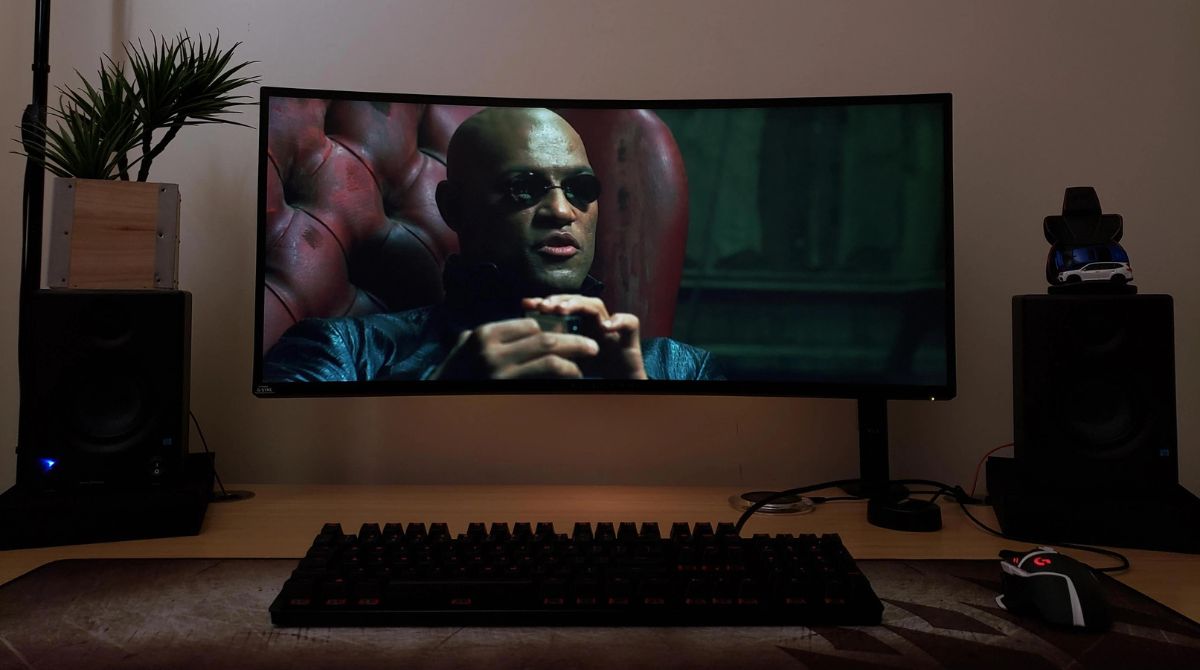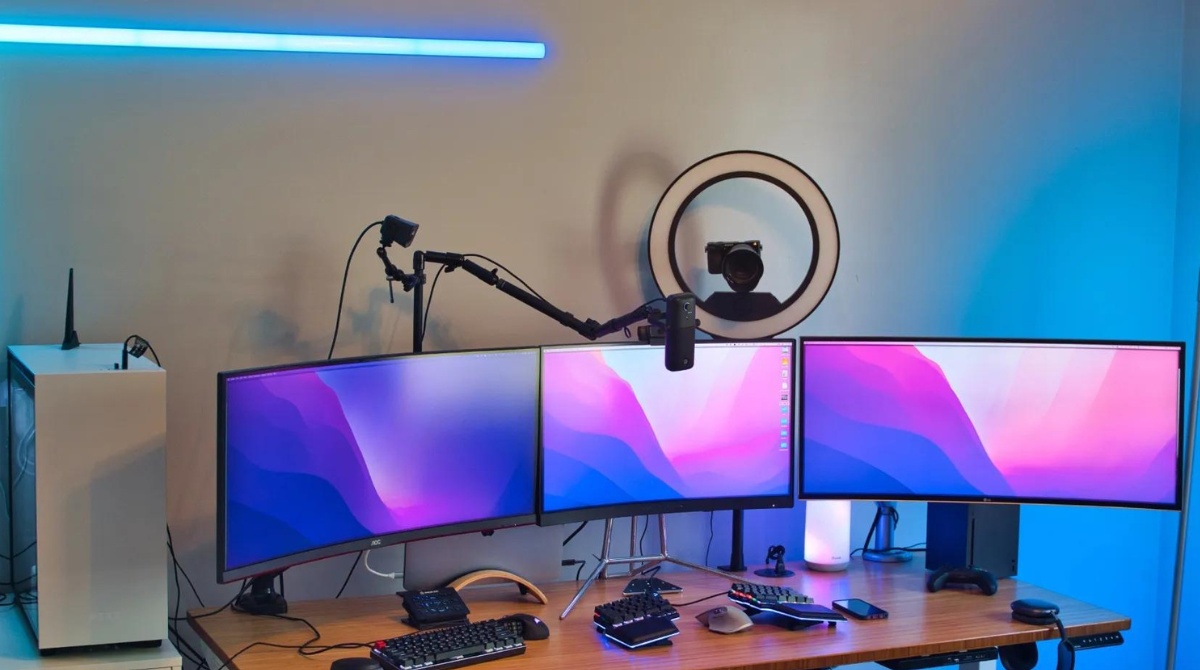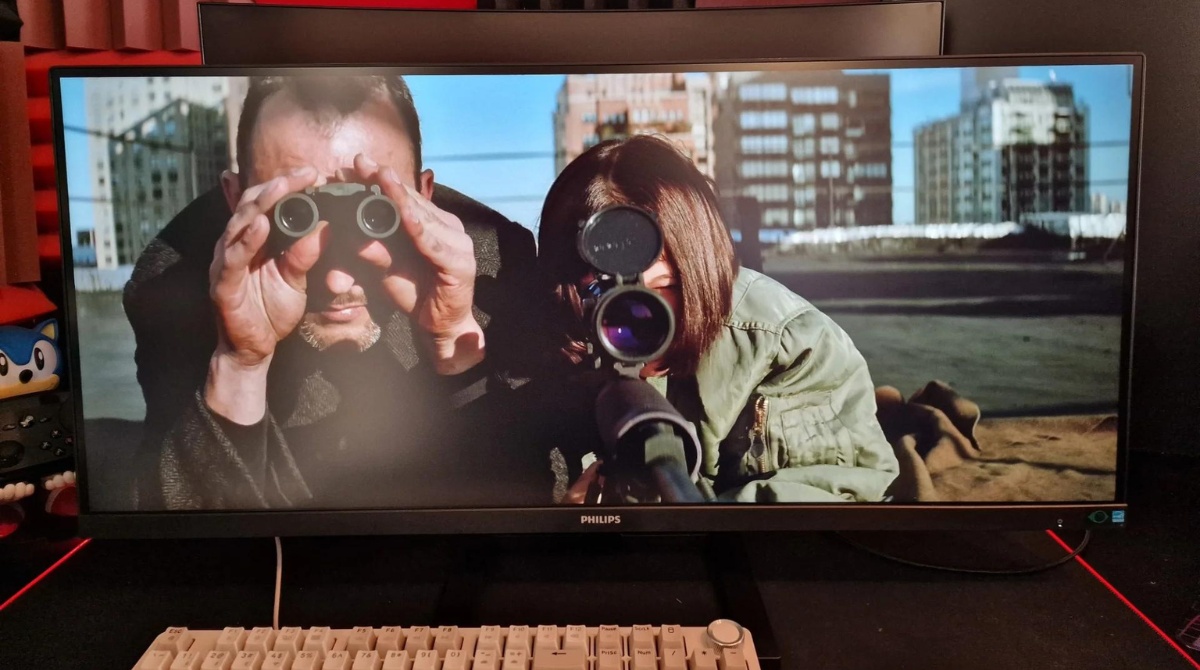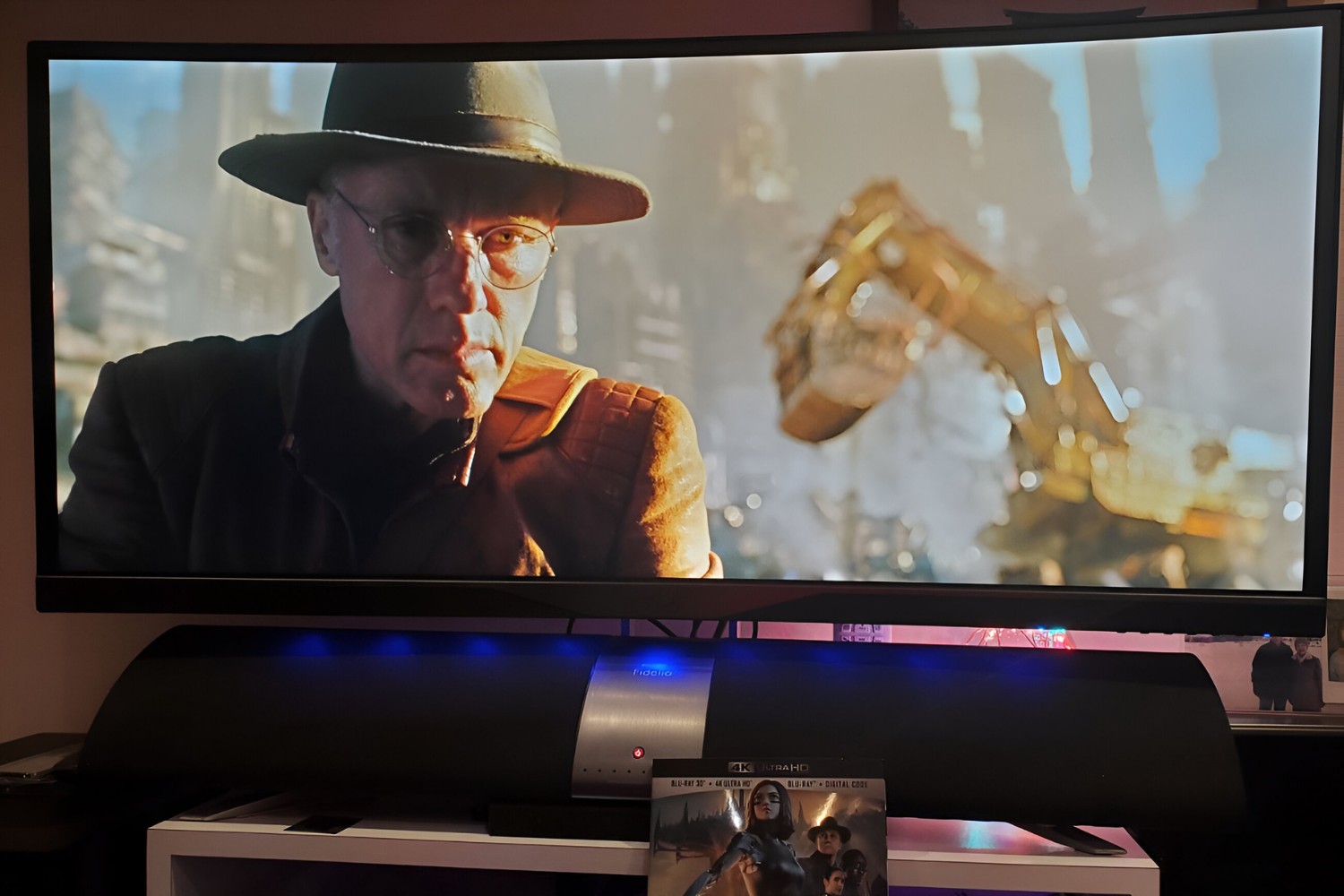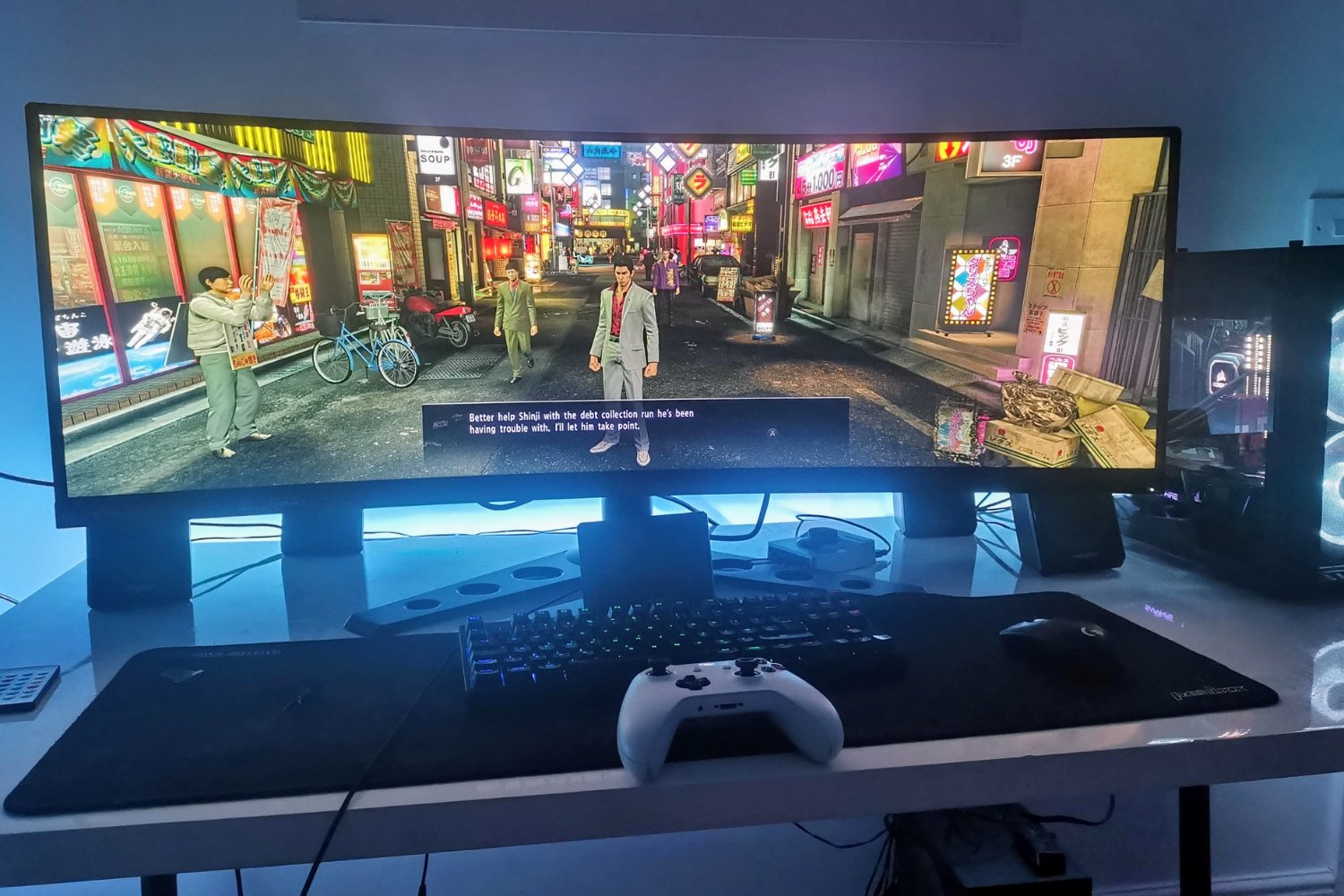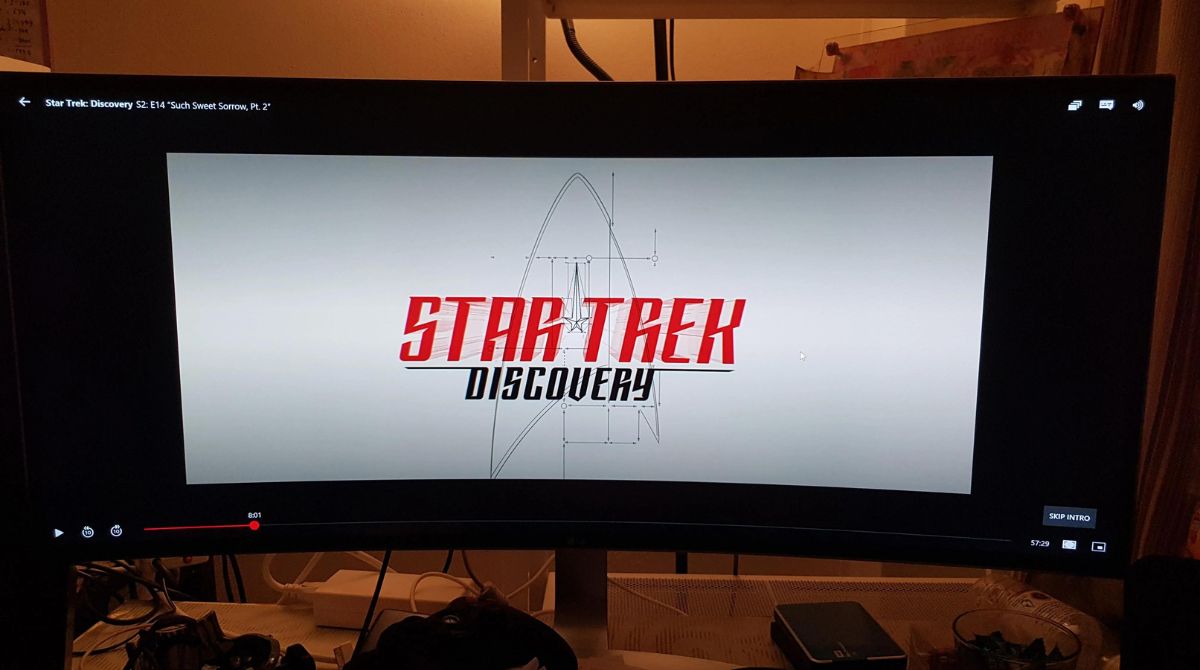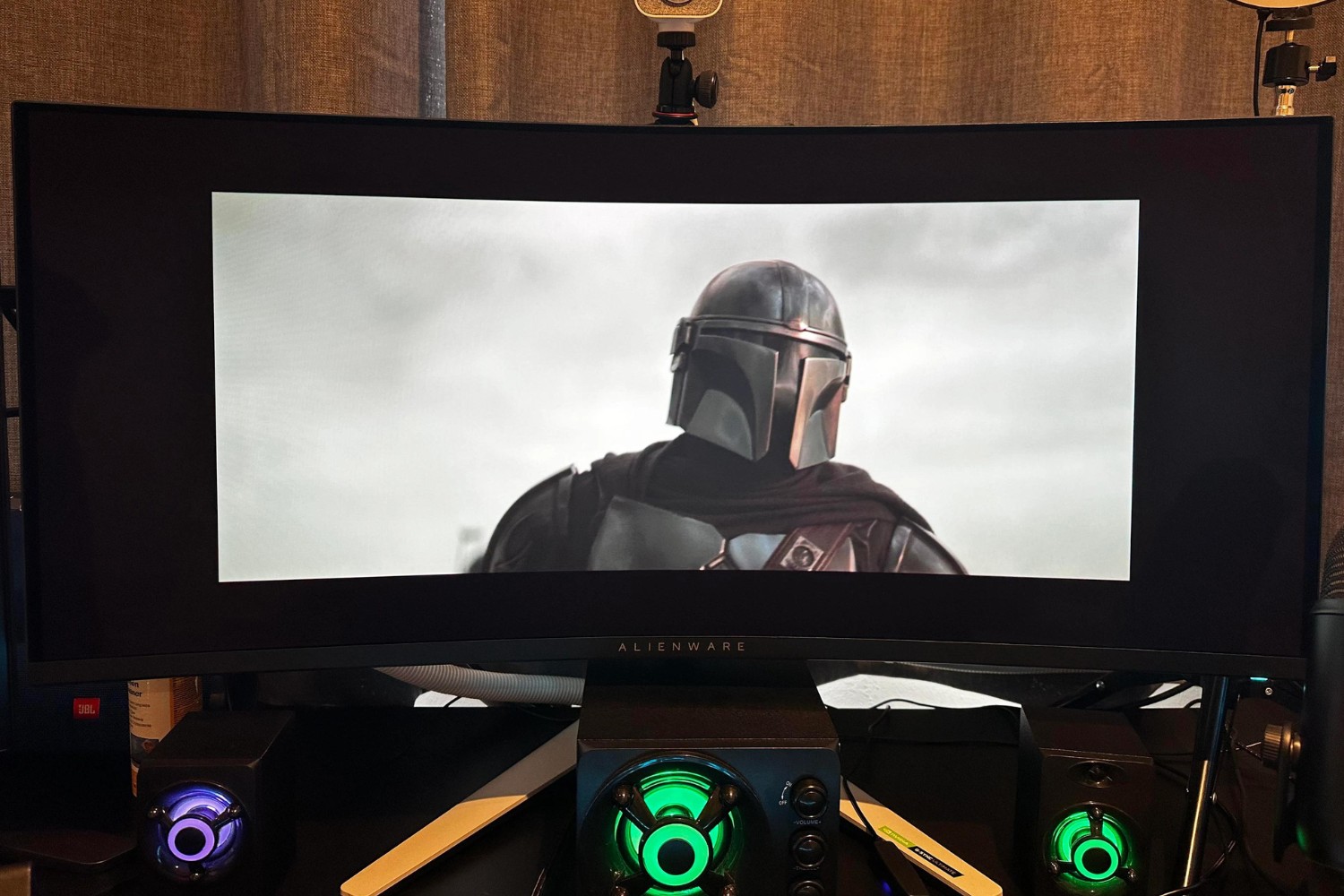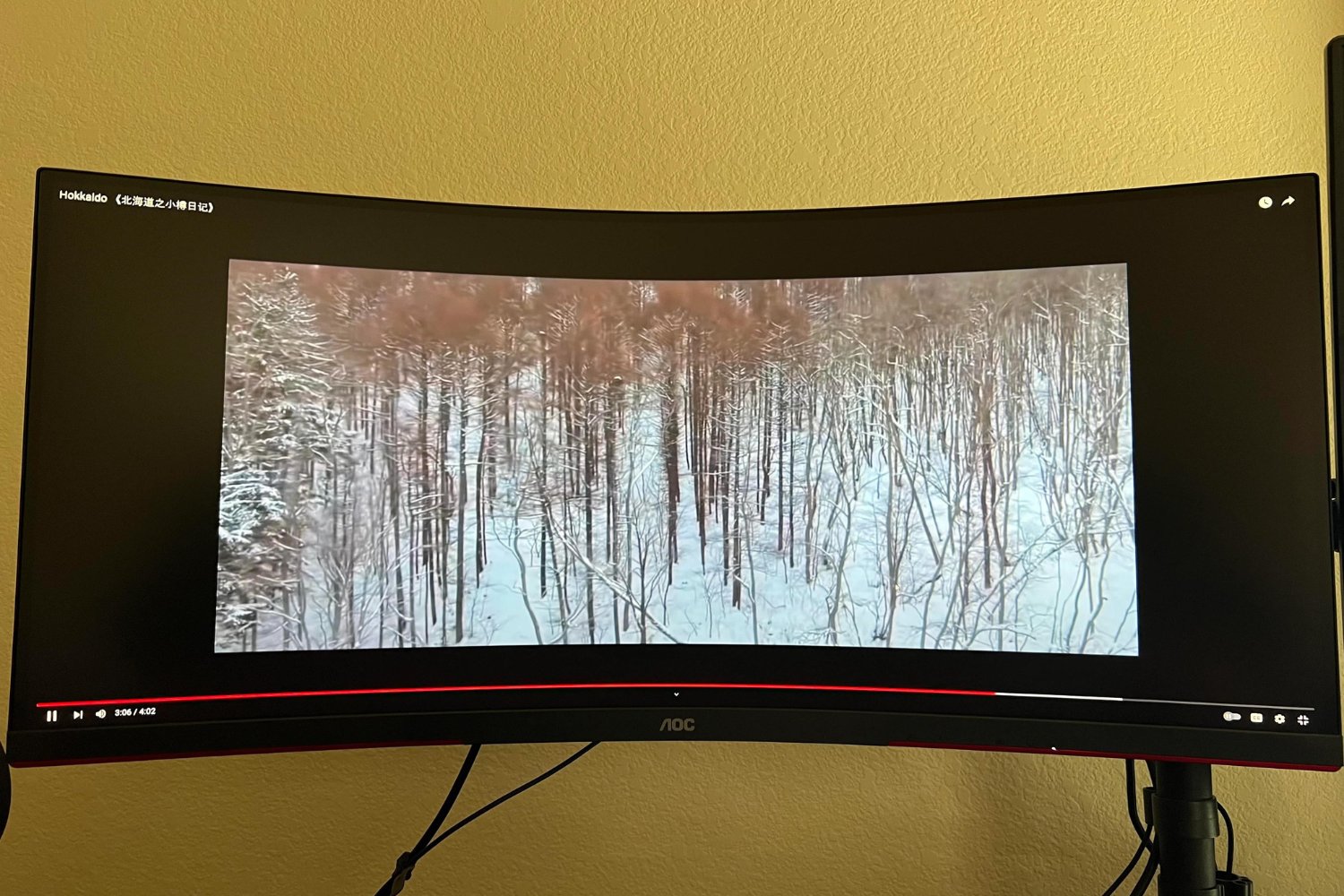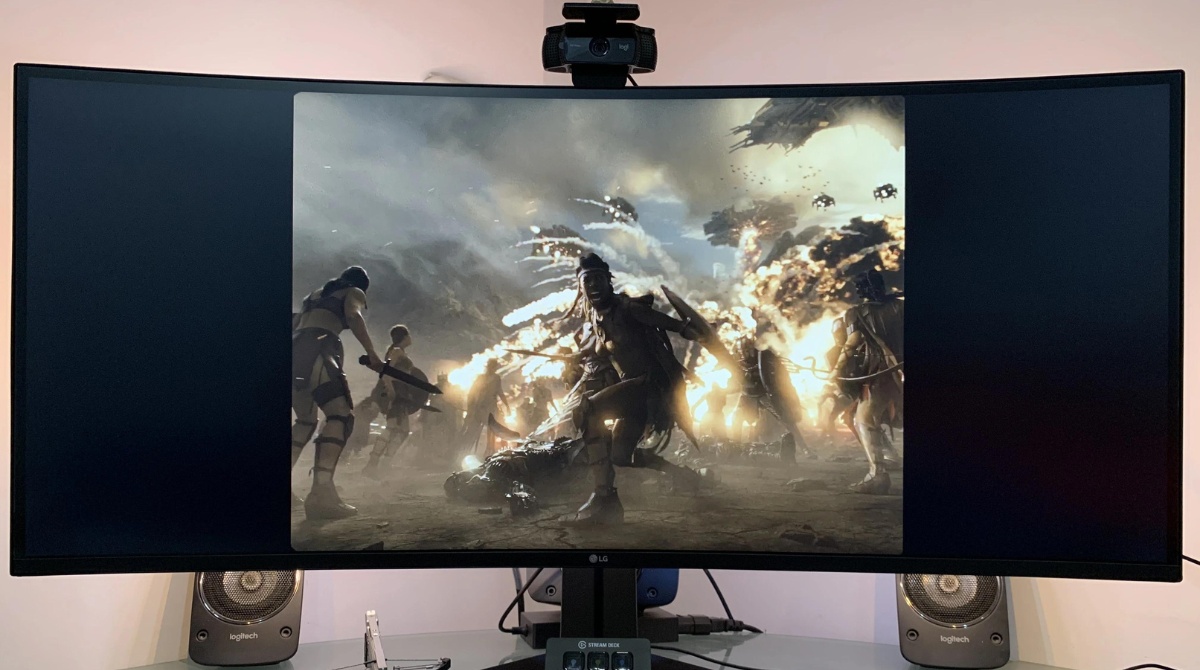Introduction
Ultrawide monitors have become increasingly popular among professionals, gamers, and home users alike. These widescreen displays offer a wider aspect ratio, providing a more immersive viewing experience and increased productivity. However, one common issue that users encounter when using ultrawide monitors is the presence of black bars on the screen.
The black bars can occur when the content being displayed does not match the native resolution or aspect ratio of the monitor. This can lead to a suboptimal viewing experience, with wasted screen space and a lack of full-screen immersion.
In this article, we will explore various ways to avoid the occurrence of black bars on your ultrawide monitor. We will discuss understanding aspect ratios, adjusting display settings, scaling options, compatibility with applications and games, updating graphics drivers, and using alternative applications or tools. By following these tips, you can optimize your ultrawide monitor experience and eliminate those pesky black bars.
Understanding Aspect Ratios
Aspect ratio refers to the proportional relationship between the width and height of a display. It is expressed as a ratio, such as 16:9, which represents the width and height respectively. Understanding aspect ratios is crucial when it comes to avoiding black bars on your ultrawide monitor.
Most standard monitors and TVs have an aspect ratio of 16:9, which is commonly referred to as widescreen. Ultrawide monitors, on the other hand, typically have an aspect ratio of 21:9 or even wider, offering a wider field of view.
When content is displayed on a monitor with a different aspect ratio than its native resolution, black bars may appear to compensate for the difference. For example, if you are trying to watch a 16:9 video on a 21:9 ultrawide monitor, the video will either be displayed with black bars on the sides or stretched to fit the width, resulting in distorted proportions.
To address this issue, it is important to understand the aspect ratio of the content you are viewing and match it to the native resolution of your ultrawide monitor. By doing so, you can ensure that the content is displayed without any black bars and in its intended proportions.
If you are unsure of the aspect ratio of a video or image, you can usually find this information in the file properties or by checking the specifications of the content. Additionally, there are online tools and software available that allow you to determine the aspect ratio of a file.
In the next sections, we will explore various methods to adjust display settings and overcome the issue of black bars on your ultrawide monitor. By implementing these techniques, you can fully utilize the wide viewing space and enjoy a seamless visual experience.
Native Resolution of Your Ultrawide Monitor
Knowing the native resolution of your ultrawide monitor is essential when it comes to avoiding black bars. The native resolution refers to the number of pixels that your monitor can display without any stretching or distortion.
To find the native resolution of your monitor, you can refer to the user manual or check the specifications provided by the manufacturer. Alternatively, you can right-click on your desktop and select “Display settings” (on Windows) or “System Preferences” followed by “Display” (on macOS) to view the current resolution.
Once you have identified the native resolution, it is crucial to ensure that the content you are viewing matches this resolution. If the resolution of the content is lower than the native resolution, black bars may appear to maintain the aspect ratio and prevent stretching or distortion of the image.
On the other hand, if the resolution of the content is higher than the native resolution of your monitor, you may not encounter black bars, but the image may be scaled down to fit the screen. In such cases, the details and sharpness of the image may be compromised.
If you are experiencing black bars on your ultrawide monitor despite matching the content’s resolution to the native resolution, it is possible that the content itself is not optimized for ultrawide displays. In such cases, you may need to explore additional methods to adjust the display settings or find alternative solutions.
In the following sections, we will delve into various techniques to overcome the issue of black bars on your ultrawide monitor. By understanding the native resolution and implementing the appropriate settings, you can optimize your viewing experience and make the most out of your ultrawide monitor’s full potential.
Adjusting Display Settings
One of the first steps in resolving the issue of black bars on your ultrawide monitor is to adjust the display settings. This involves ensuring that your monitor is set to its native resolution, as well as checking for any overscan or underscan settings.
To adjust the display settings on a Windows computer, right-click on the desktop and select “Display settings.” From there, you can select the desired resolution and ensure that it matches the native resolution of your ultrawide monitor.
On macOS, you can access the display settings by clicking on the Apple menu, selecting “System Preferences,” and then clicking on “Displays.” Similar to Windows, make sure to choose the correct resolution that aligns with your monitor’s native resolution.
In addition to adjusting the resolution, you may need to look for any overscan or underscan settings. These settings control the scaling of the display, and adjusting them can help eliminate black bars or ensure that the content fills the screen properly.
Furthermore, some monitor models have additional options in their OSD (On-Screen Display) settings that allow you to customize the display parameters. Take some time to explore the OSD menu to see if there are any relevant settings that can optimize the display for your specific ultrawide monitor.
If adjusting the display settings does not eliminate the black bars, there may be other factors at play, such as the compatibility of the content or the software that you are using. In the following sections, we will explore these factors and provide additional solutions to help you get rid of the black bars on your ultrawide monitor.
Scaling Options
When dealing with black bars on your ultrawide monitor, exploring the scaling options can help you optimize the display and eliminate any unwanted black bars. Scaling refers to the process of adjusting the size of the content to fit the screen without distortion.
Windows and macOS offer different scaling options that can be accessed through the display settings. In Windows, you can find the scaling options under “Scale and layout” in the display settings. You can choose between different scaling percentages to adjust the size of the content on your ultrawide monitor.
On macOS, the scaling options are available under the “Displays” settings. You can choose between “Default for display” or “Scaled” and select the appropriate resolution that suits your ultrawide monitor.
Experimenting with different scaling options can help you find the best fit for your ultrawide monitor. It is recommended to select a scaling option that allows the content to fill the screen without any black bars, while still maintaining a clear and sharp image.
Keep in mind that scaling options may vary depending on the graphics card and the monitor model you are using. It is always advisable to refer to the user manual or the manufacturer’s website for specific instructions related to scaling on your ultrawide monitor.
If the scaling options within the operating system settings do not provide satisfactory results, there may be alternative applications or tools available that can further assist in managing the display and eliminating black bars. We will explore these options in the following sections.
Compatibility with Applications and Games
One of the reasons for black bars on your ultrawide monitor may be the lack of compatibility between certain applications or games and the ultrawide aspect ratio. While most modern applications and games are designed to support widescreen displays, there are still some that may not fully utilize the extra screen real estate.
If you encounter black bars while running an application or game, there are a few potential solutions you can try:
- Check for updates: Ensure that the application or game is up to date. Developers often release updates to improve compatibility with different display ratios, including ultrawide monitors. Installing the latest updates may resolve the issue of black bars.
- Look for in-app settings: Some applications and games offer settings within their own menus to customize the display. Look for options related to display resolution, aspect ratio, or fullscreen mode. Adjusting these settings may help you eliminate black bars.
- Explore user-created solutions: Online forums and communities dedicated to ultrawide monitors often provide user-created solutions or mods for applications and games that lack native ultrawide support. These modifications can help you stretch or adjust the content to fill the screen and remove any black bars. However, note that using mods may come with risks and could potentially violate the terms of service for certain games.
If none of these solutions work, it is possible that the application or game simply does not support ultrawide displays. In such cases, you may have to accept the presence of black bars or consider alternative applications or games with native support for ultrawide aspect ratios.
While it may be frustrating to encounter black bars in certain applications or games, it is worth remembering that the majority of modern content creators are now optimizing their products for widescreen displays, including ultrawide monitors. The prevalence of ultrawide support continues to improve as more users adopt these displays, ensuring a better overall experience in the future.
Updating Graphics Driver
One often overlooked factor that can contribute to the appearance of black bars on your ultrawide monitor is an outdated graphics driver. Graphics drivers play a vital role in rendering and displaying content on your screen, and keeping them up to date can help ensure optimal compatibility and performance.
Graphics card manufacturers regularly release driver updates that address compatibility issues, improve performance, and provide support for new technologies. These updates may include optimizations specifically designed for ultrawide displays.
To update your graphics driver, you will need to identify the make and model of your graphics card and visit the manufacturer’s official website. Look for a section dedicated to driver downloads or support, where you can search for the latest driver for your specific graphics card model.
Once you have downloaded the appropriate driver, follow the manufacturer’s instructions to install it on your computer. Make sure to restart your computer after the installation process is complete.
Updating your graphics driver can potentially resolve compatibility issues and improve the overall performance of your ultrawide monitor. It may also eliminate any black bars caused by outdated software.
If you are unsure of how to update your graphics driver or if you encounter any issues during the process, you can refer to the manufacturer’s support documentation or contact their customer support for assistance.
By keeping your graphics driver up to date, you can ensure that your ultrawide monitor functions optimally, providing a seamless and immersive viewing experience without the presence of black bars.
Using Alternative Applications or Tools
If you are still experiencing black bars on your ultrawide monitor despite trying the previous solutions, using alternative applications or tools may provide a workaround to eliminate the issue.
There are several software programs available that can help you optimize the display on your ultrawide monitor and eliminate black bars. These applications offer various features and customization options to enhance your viewing experience.
One example is “Ultrawide Display Enabler,” a tool that enables ultrawide support for applications that do not natively support the aspect ratio. This software stretches or adjusts the content to fill the screen and remove any black bars. However, keep in mind that using such tools may not guarantee perfect results, as some applications may still have limitations in their compatibility.
Another option is to explore alternative applications that are specifically designed to support ultrawide displays. Popular applications like media players, web browsers, and productivity software often have ultrawide-friendly versions available that maximize the use of the wider aspect ratio.
Additionally, if you are a gamer, many modern titles offer native ultrawide support, allowing you to fully utilize your monitor’s wider field of view. Look for games that have the “Ultrawide” or “21:9” aspect ratio listed in their system requirements or features.
When using alternative applications or tools, it is important to check for user reviews, online forums, or official documentation to ensure compatibility with your specific ultrawide monitor model and software version.
Keep in mind that while alternative applications or tools can help eliminate black bars on your ultrawide monitor, they may not provide a perfect solution in all cases. Results may vary depending on the specific content and software being used. Experimentation and customization may be necessary to find the best fit for your needs.
By exploring alternative applications or tools, you can enhance your ultrawide monitor experience and enjoy a seamless display without the presence of black bars.
Conclusion
Dealing with black bars on your ultrawide monitor can be frustrating, but with a combination of understanding aspect ratios, adjusting display settings, and exploring compatibility options, you can eliminate this issue and fully enjoy the immersive experience of your ultrawide display.
Start by understanding the aspect ratio of your monitor and ensuring that content matches its native resolution. Adjusting display settings, such as resolution and scaling options, can help optimize the display and eliminate black bars.
Compatibility with applications and games is another crucial aspect to consider. Keeping software updated and exploring in-app settings can help achieve better support for ultrawide displays. In some cases, user-created solutions or alternative applications specific to ultrawide monitors can provide a workaround.
Updating your graphics driver is also essential for optimal performance and compatibility with your ultrawide monitor. Make sure to regularly check for driver updates from the manufacturer’s official website.
While it may require some trial and error, implementing these strategies will help you make the most out of your ultrawide monitor and create a visually immersive experience without the presence of black bars.
Remember, each monitor and software combination may have unique considerations, so be sure to check the user manual, support documentation, and online forums for further guidance specific to your setup.
By following these tips, you can enhance your ultrawide monitor experience and enjoy the full potential of its wider display, whether you’re a professional, a gamer, or a casual user.







